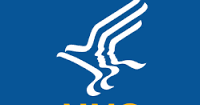Vinod Rao, M.D., Ph.D., of Massachusetts General Hospital, and colleagues used electronic health...
Adolescent Opioid Misuse Linked to Parental Misuse
 |
Pamela C. Griesler, Ph.D., of the New York State Psychiatric Institute and colleagues analyzed data from the National Survey on Drug Use and Health from 2004 to 2012 involving 35,000 parents (nearly two-thirds of whom were mothers) who had an adolescent aged 12 to 17 living in their household. As part of the survey, parents and adolescents were asked if they had ever used one of 21 prescription opioids without a doctor’s prescription or if they took the drug “only for the experience or feeling it caused.” They were also asked questions about lifetime depressive episodes and their use of cigarettes, alcohol, or other drugs.
About 14% of parents had ever misused a prescription opioid; white parents reported higher rates of use (16%) than African American parents (10%) and Hispanic parents (9%). About 9% of adolescents reported opioid misuse, with boys and girls as well as children from various races and ethnic backgrounds all reporting similar rates of use. Misuse increased with age—from 4% among 12-year-olds to 15% among 17-year-olds.
Adolescents were nearly twice as likely to misuse opioids when at least one of their parents had done so: nearly 14% of adolescents had misused opioids in their lifetime when a parent had also done so, compared with 8% when a parent had not. However, the associations differed with the sex of the parent: only mothers’ opioid misuse was significantly associated with that of their adolescents.
The researchers identified several parental factors that were associated with adolescents’ misuse of prescription opioids, including lifetime smoking and high levels of parent-adolescent conflict. Adolescents were more likely to misuse opioids if they smoked cigarettes, used marijuana, were depressed, or perceived that most of their classmates used drugs.
“Similar to other types of parental substance use, parental NMPO [nonmedical prescription opioid] use is associated with offspring use and should be considered in efforts to reduce adolescent NMPO use,” the researchers concluded. “Smoking should also be the target of interventions; there are significant links between parental and adolescent smoking and adolescent NMPO use. Parent-based interventions targeted at NMPO use among youth should not only address parental NMPO use but should also promote positive parenting practices...”
For related information, see the American Journal of Psychiatry article “Improving Our Understanding of Substance Use Disorders.”
(Image: iStock/monkeybusinessimages)






